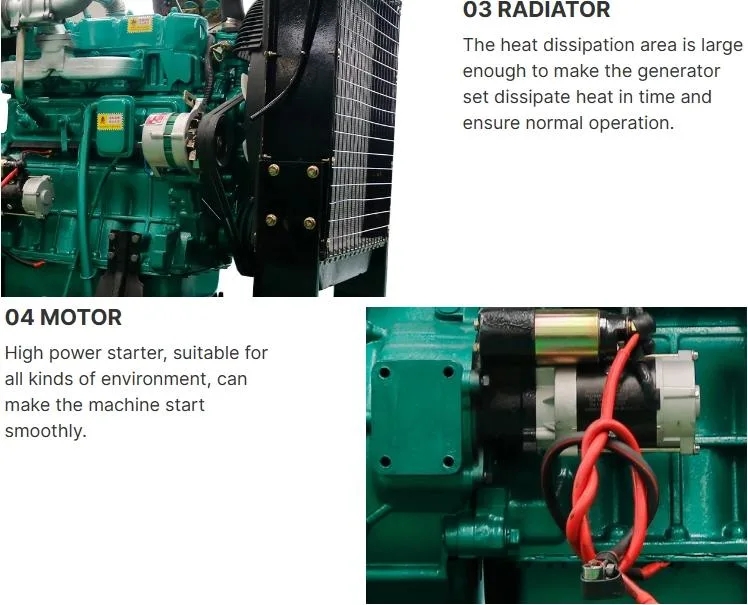Introduction:
The Arctic region is renowned for its extreme cold temperatures, harsh weather conditions, and remote locations. These unique challenges make it essential to have reliable and efficient power sources to sustain human activities and infrastructure development. In this regard, diesel generators have emerged as the go-to technology for powering the Arctic, thanks to their robustness, adaptability, and ability to perform under extreme conditions. This article explores the significance of diesel generators in Arctic regions, their design considerations, operational challenges, and their role in ensuring the smooth functioning of vital industries and communities in these remote environments.
1. Diesel Generators: A Brief Overview:
1.1 Understanding Diesel Generators:
Diesel generators are a type of internal combustion engine that converts the chemical energy in diesel fuel into mechanical energy, which is then transformed into electrical energy through an alternator. These generators come in various sizes and power ratings, making them suitable for a wide range of applications, from small residential backup systems to large-scale industrial operations.
1.2 Advantages of Diesel Generators:
Diesel generators offer several advantages that make them particularly well-suited for Arctic regions:
1.2.1 Fuel Efficiency and Cost-effectiveness:
Diesel fuel is more energy-dense than other fuels, resulting in higher fuel efficiency. This characteristic is crucial in remote Arctic regions where fuel deliveries can be sporadic and expensive. Diesel generators' ability to extract maximum power from minimal fuel consumption makes them a cost-effective choice for long-term energy supply.
1.2.2 Cold Weather Performance:
Diesel generators are renowned for their ability to operate in extreme temperatures. They can start and run reliably even in sub-zero temperatures, making them ideal for Arctic regions where the mercury can drop to -50 degrees Celsius or lower.
1.2.3 Robustness and Durability:
Diesel generators are designed to be robust and durable. They can withstand harsh weather conditions, including snowstorms, high winds, and freezing temperatures, without compromising their performance. This resilience ensures uninterrupted power supply in the Arctic's unforgiving environment.
2. Design Considerations for Arctic Diesel Generators:
2.1 Cold Weather Modifications:
Arctic diesel generators require specific modifications to ensure reliable performance in extreme cold temperatures. These modifications include:
2.1.1 Cold-Start Systems:
Cold-start systems, such as glow plugs or grid heaters, preheat the combustion chamber to facilitate ignition in cold conditions. This feature is crucial for starting the generator in freezing temperatures where the cold engine oil and fuel can hinder the ignition process.
2.1.2 Fuel and Lubricant Selection:
Using low-temperature diesel fuel and lubricants with appropriate viscosity ratings is essential for preventing fuel gelling and maintaining proper lubrication in extremely cold environments.
2.1.3 Insulation and Heating:
Arctic diesel generators often feature additional insulation and heating elements to protect critical components, such as the engine block, fuel lines, and batteries, from freezing. These measures help maintain optimal operating temperatures and prevent damage caused by extreme cold.
2.2 Specialized Enclosures and Soundproofing:
Arctic diesel generators are typically housed in specialized enclosures designed to protect them from the elements and reduce noise pollution. These enclosures are constructed to withstand extreme cold, high winds, and heavy snow loads while providing adequate ventilation for cooling and exhaust.
2.3 Remote Monitoring and Control:
Given the remote nature of Arctic regions, diesel generators often incorporate advanced monitoring and control systems, enabling real-time remote management. These systems allow operators to monitor performance, fuel levels, and potential issues, thus optimizing maintenance and troubleshooting, and preventing costly breakdowns.
3. Operational Challenges and Solutions:
3.1 Fuel Supply and Storage:
Ensuring a reliable and consistent fuel supply in remote Arctic regions presents a significant challenge. Extreme weather conditions, limited infrastructure, and long distances make fuel deliveries infrequent and expensive. To overcome this challenge, many Arctic sites adopt strategic fuel storage systems, employing redundancy and backup plans to mitigate the risk of fuel shortages and downtime.
3.2 Environmental Considerations:
Arctic regions are environmentally sensitive areas, and mitigating the impact of diesel generator emissions is crucial. Fortunately, https://www.lkpowerplant.com/400kw/ advanced emission control technologies, such as catalytic converters and particulate filters, minimizing their environmental footprint. Additionally, exploring alternative fuel options, such as biodiesel or renewable diesel, can further reduce emissions and promote sustainability.
3.3 Maintenance and Serviceability:
Maintaining and servicing diesel generators in Arctic regions can be challenging due to limited accessibility, extreme weather conditions, and the need for specialized skills. Establishing routine maintenance schedules, training local technicians, and partnering with expert service providers can help ensure the reliable operation of diesel generators in these remote areas.
4. Role of Diesel Generators in Arctic Development:
4.1 Resource Extraction and Mining Operations:
Diesel generators are essential in supporting resource extraction and mining operations in Arctic regions. They power drilling equipment, machinery, and camp facilities, enabling efficient exploration, extraction, and processing of valuable resources, such as oil, gas, and minerals.
4.2 Remote Communities and Infrastructure:
Diesel generators play a vital role in providing electricity to remote communities, research stations, and infrastructure projects in the Arctic. They serve as the primary power source, supporting essential services, such as heating, lighting, communication systems, and water pumping, ensuring a comfortable and functional living environment for residents and workers in these isolated areas.
4.3 Emergency Preparedness and Disaster Relief:
Arctic regions are susceptible to natural disasters, such as blizzards, ice storms, and avalanches. Diesel generators serve as reliable backup power sources during emergencies, providing critical electricity for emergency response centers, hospitals, and evacuation shelters.
Conclusion:

Diesel generators have proven to be indispensable in powering the Arctic, offering reliable energy solutions in one of the harshest environments on our planet. Their fuel efficiency, cold weather performance, durability, and adaptability make them the preferred choice for industries, communities, and infrastructure development projects in remote Arctic regions. As technology continues to advance, diesel generators will likely evolve further, incorporating innovative features and alternative fuel options to enhance their efficiency, reduce emissions, and contribute to sustainable Arctic development.
